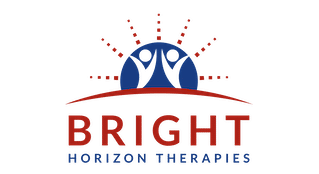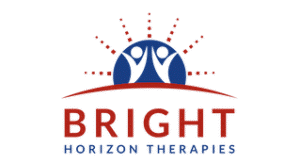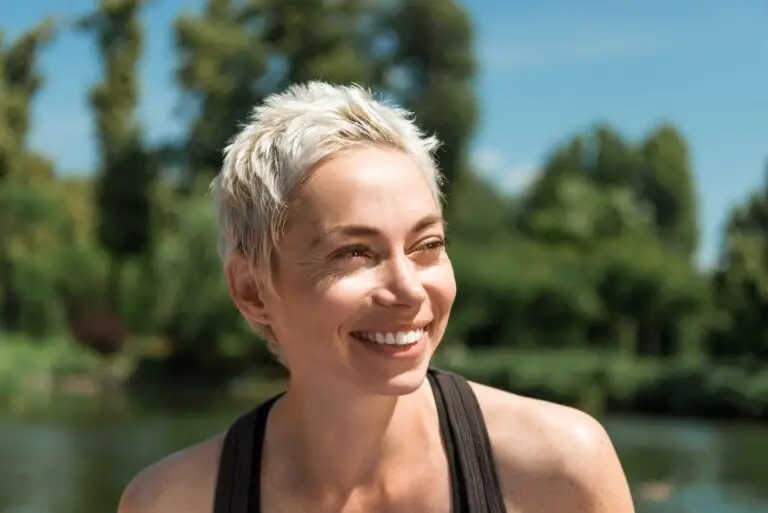In this blog post, we’ll explore the question of how childhood abuse affects mental health. I’m deeply passionate about this topic, informed by my professional experience and personal journey. Often, it’s challenging to recognize the impact of childhood abuse—especially if we grew up with it and developed coping mechanisms to survive. So, how does childhood abuse affect mental health in adults?
Please take what resonates and leave what doesn’t. If the term “abuse” doesn’t feel right to you, I invite you to use any label that better reflects your experience. It’s important to remember that many of the symptoms you may experience are not signs that something is wrong with you or that you must “fix” yourself. These behaviours, though they may not fully support your growth now, once served as essential coping mechanisms in an unsafe environment.
Recognizing the effects of childhood abuse is a vital first step toward healing. We can’t heal what remains hidden or unacknowledged. I hope this perspective encourages you to view these parts of yourself with gentleness and compassion. With patience and perseverance, healing and transformation are within reach for all of us.
Types of childhood abuse and their impact
Childhood abuse can take many forms, often involving repeated or prolonged exposure to harmful, unsafe, or neglectful conditions during a child’s formative years. Such experiences can disrupt a child’s sense of safety, stability, and self-worth, leading to adaptive coping strategies that, while essential for survival in childhood, may present challenges in adulthood. For instance, people-pleasing—a tendency to ignore one’s needs to maintain peace—can emerge as a survival mechanism in a dysfunctional family environment. Although these responses may feel deeply ingrained, recognizing them as adaptations can be the first step toward change and growth.
Because childhood abuse occurs within relationships, it can complicate our understanding of what safe, healthy relationships look like, potentially leading us to tolerate behaviours that don’t truly serve us as adults. However, it’s important to remember that recovery is possible. Understanding and reprocessing past experiences allows us to learn to set healthy boundaries and reconnect with our innate resilience.
Here are some types of abusive behaviours that can occur:
Physical abuse
Childhood physical abuse involves intentional acts of physical harm inflicted by a caregiver or authority figure, often in the form of hitting, shaking, or other violent actions. These experiences can leave us with physical and emotional scars. Furthermore, they impact our sense of safety, self-worth, and trust in others. Many people develop protective behaviours to cope in these environments, and healing involves understanding these adaptive responses, reclaiming a sense of security and developing ways to learn to trust.
Sexual abuse
Childhood sexual abuse is any form of sexual exploitation or manipulation by someone in a position of trust or power. This profound boundary violation can affect mental, emotional, and physical health. Furthermore, people who have experienced sexual abuse may adopt coping mechanisms to navigate the trauma, and are often exposed to social stigma. Therefore, healing usually begins with recognizing the impact and finding safe, non-pathologizing, supportive pathways toward recovery.
Emotional abuse
Emotional abuse can be difficult to recognize since it can be very subtle. It happens if a child is exposed to constant criticism, blame, or invalidation. Forms of emotional abuse include guilt-tripping, shaming or gaslighting. As a result, this abuse can make it hard for a child to trust their feelings and identity. Yet, healing is possible and often involves re-establishing self-trust and learning to validate one’s emotions.
Neglect
Childhood emotional neglect occurs when a caregiver fails to provide the emotional support, validation, and attention a child needs to thrive. This includes emotionally unavailable parents or a lack of affection. Additionally, it involves invalidating the child’s feelings or needs. Such neglect can make it difficult for a child to feel seen or valued, but recognizing these experiences as neglect can be empowering. Neglect and emotional abuse are some of the most common forms of childhood abuse.
Furthermore, emotional abuse and neglect are less recognized in our society. Therefore, it can be harder to find mental health professionals who can acknowledge and validate it. Healing often involves learning to meet one’s emotional needs with care and compassion.
Discrimination & systemic oppression
For children who belong to the LGBTQ2S+ community or children who are BIPOC, systemic oppression (such as racism, homophobia, or transphobia) can add another layer of abuse, whether within the family or the larger social environment. Recognizing and addressing the impacts of discrimination can be a critical part of healing and self-acceptance, especially within supportive, inclusive spaces. This applies to any individual who belongs to an intentionally marginalized group.
At the core of childhood abuse is often an authority figure—someone who, in an ideal world, would be a safe and trustworthy presence—misusing their power and violating the dignity and trust of the child. It’s essential to recognize that the responsibility for this harmful behaviour lies solely with the person who acted in these ways; it was not the child’s fault, and such actions are never okay. As adults, while we may carry the effects of these experiences, we also have the power to work toward healing and reclaiming a life rooted in self-worth and resilience. With patience, support, and gentleness, recovery is possible. This allows people to reconnect with their innate strength and live more meaningfully.
When I have experienced childhood abuse, does it mean I am traumatized?
Many experiences exist on a spectrum, and childhood abuse and trauma are no exception. Childhood abuse can lead to complex trauma, but the relationship between the two isn’t always direct or inevitable. Not every child who experiences abuse is traumatized; individual responses can vary widely based on factors like resilience, support systems, and personal coping mechanisms.
For recovery, what’s most important is not necessarily labelling the experience as “trauma” or “abuse” but instead exploring the symptoms you are experiencing and understanding how they affect you. Since these experiences exist on a spectrum, the healing of childhood abuse is very similar to the healing of trauma.
Trauma occurs when an experience overwhelms our ability to process or integrate it emotionally or when there is a perceived or actual threat to one’s safety or the safety of a caregiver. Because childhood is a time when our brains are especially vulnerable and still developing—including our “window of tolerance” for managing stress—abuse during these formative years is more likely to have traumatic effects. However, trauma is not inevitable; factors such as resilience, support, and individual differences can play a protective role.
Impact of unresolved childhood abuse on well-being as an adult
The impact of childhood abuse on mental health depends on the individual and varies. Furthermore, some people heal from childhood abuse on their own; others experience the effects of childhood abuse as adults. Many factors may influence the impact on you – most of them are out of your control. However, it matters to identify those that block you from living your best life so that you can heal from it. Many clients come to me because of the symptoms they have, but they haven’t recognized yet that these effects stem from childhood abuse. This clarity helps them realize that it had nothing to do with them but resulted from what has happened to them.
One of my aha moments as a young adult was reading an article in Psychology Today many years ago. It stated that it is a warning sign if an individual is constantly agreeable and doesn’t make any trouble(which translates into not having any boundaries). This behaviour is associated with the “fawn response”- a trauma response where we are overly appeasing – which is related to childhood abuse. Learning to set healthy boundaries and be assertive was essential to my healing journey. Please note that healing from childhood abuse in adulthood is possible at any stage of your life, whether in your twenties or sixties.
Here are some examples of how childhood abuse can manifest in our adult lives. While this list may sound intimidating, remember that many of these impacts were an adaptive coping skill that helped you survive.
Emotional dysregulation as a psychological consequence of childhood abuse
Emotional dysregulation usually happens on a spectrum. Some people may experience heightened or overwhelming emotions if they face a situation in the present that touches on their childhood experience. Other people may feel constantly numb and disconnected from their feelings. Others may swing between numbness and overwhelming emotions. Some people may start to use substances to regulate their emotional dysregulation. Learning to regulate our emotions is a gradual process that requires additional tools like grounding techniques, mindfulness, self-reflection, self-awareness, and curiosity.
Anxiety as an impact of childhood abuse
Childhood abuse can cause chronic anxiety combined with parts that are hypervigilance since the individual grew up in an unsafe environment. Remember that healing doesn’t mean assuming that all environments are safe. Healing means building the capacity to discern safe environments and protect yourself from toxic ones. Polyvagal theory can provide insight into our autonomic nervous system and its responses to the environment and relationships.
Depression
Some people may develop a chronic sense of sadness and feel stuck in hyperarousal. They may also experience emotional numbness or emotional disconnect. We can overcome emotional numbness by gently reconnecting with our emotions and bodies. Additionally, it is helpful to use tools that stimulate our nervous system, such as dancing, upbeat music or jumping jacks.
Difficulties in setting boundaries
Childhood abuse is a constant boundary violation. As a result, many people struggle to connect with their boundaries and set healthy boundaries as adults. Additionally, they may be unaware of their needs and can’t communicate them. Furthermore, emotions like shame or guilt may prevent them from communicating their boundaries. Setting healthy boundaries is a prevalent theme that many of my clients want to improve on.
Attachment issues as a psychological impact of childhood abuse
Childhood abuse may lead to insecure attachment, such as anxious, avoidant, or disorganized attachment. This can impact our capacity to build adult relationships, especially if both partners fall back into their adaptive attachment styles. However, we can transform these attachment styles into earned, secure attachments with support and self-awareness over time. For example, mindfulness and Zen meditation can help improve our attachment styles. Additionally, parts work therapy can help you improve your connection with yourself.
Low self-esteem and perfectionism as an emotional consequence of childhood trauma
Some clients experience low self-esteem and develop a highly perfectionistic part to balance this. Therefore, they may experience unrealistic expectations of themselves and others and set excessively high goals. Parts work therapy can be vital to exploring and transforming parts with low self-esteem and perfectionism.
Trauma, complex trauma and PTSD as a possible consequence of childhood abuse
Childhood abuse may lead to trauma, complex trauma and PTSD. As I stated before, the symptoms of trauma exist on a spectrum. Therefore, many of them are similar to what I described in these points. Furthermore, childhood abuse can cause inner fragmentation and disconnecting from our sense of self.
Complex trauma may develop after chronic trauma, such as prolonged childhood abuse or domestic violence. Please note that PTSD is the diagnosis, which means the symptoms of trauma fit into the diagnostic criteria for PTSD according to the DSM. Some people have experienced trauma, but they don’t fit the diagnosis for PTSD.
While we can heal from trauma, trauma and PTSD are still stigmatized, which can be a painful experience. Healing from trauma is possible but a nonlinear process. In general, I recommend collaborating with a professional who is trained to work with trauma and your specific context. Trauma treatments like parts work therapy, EMDR and somatic approaches are best practices for healing from trauma. These approaches can also help you recover from childhood abuse.
Breaking the cycle: How to heal from childhood abuse as an adult
It is hard to recognize that we have experienced childhood abuse. It often changes the narrative we have of our family or about our childhood. Parts of us may be scared. However, the first step towards healing is acknowledging what has happened to us and exploring how it affected us.
Keep in mind that healing the effects of childhood abuse is a journey, and you need to start where you are. For example, it’s easy to say, “Set healthy boundaries,” but it is an inner transformation to practice it. Here are some ideas on how you can move forward in your healing journey from childhood abuse:
Learn to set healthy boundaries
Healthy boundaries are the foundation of a healthy relationship. Learning to set them will help you empower yourself, build resilience, and choose healthy relationships. I’d invite you to start communicating healthy boundaries gradually and begin with people where it is easy. In the beginning, try to avoid people with toxic behaviours since it is generally more complicated to set healthy boundaries in this context. Setting healthy boundaries is like building a muscle – they grow stronger with practice.
Work towards emotional regulation
Learn to recognize your emotions and the state of your nervous system. Learn tools to ground yourself and self-soothe yourself. For example, you can use the 5, 4, 3, 2, 1 tool if you feel overwhelming emotions. Here are the five questions that you can use to practice this grounding tool:
- What are 5 things you can see? Name five things you can see.
- What are 4 things you can hear? Name four things you can hear.
- What are 3 things you can feel? Name three things you can feel.
- What are 2 things you can smell? Name two things you can smell.
- What is 1 thing you can taste? Name one thing you can taste.
Curious about learning more practical tools for healing? Tune into the episode ‘5 Effective Trauma Counselling Techniques‘ for valuable insights
Mindfulness
Use mindfulness to connect with your body. For example, you can try body scans or mindfulness videos available on YouTube or check in with yourself and ask yourself: What is happening inside? Then, describe what you notice insight.
Find healthy ways to build trust and love
Childhood abuse can distort our perspective about healthy love and trust, making it harder to say no to toxic relationships. Therefore, I often invite my clients to create a vision of what healthy love looks like for them. You can reflect on past relationships and what qualities you value in relationships. For example, I value mutual respect and assertiveness more than love. Creating a clear vision of a healthy relationship can be a compass to guide you in choosing the relationships you want in your life.
Seek professional help
If you feel stuck or don’t notice the progress you want, seek professional help. I’d recommend trauma counselling since its principles should help you heal. However, keep in mind that it is okay to say no to mental health professionals who don’t role model healthy behaviours in the therapeutic relationship or who don’t manage their power healthily. Finding a mental health professional who is a good fit for your journey is okay.
Take away – How does childhood abuse affect mental health
While there are common symptoms, childhood abuse may affect our mental health differently. Therefore, it is crucial that we are curious about our experience and understand the connection between what has happened to us and present symptoms. Healing from childhood abuse is a unique journey, often requiring a blend of self-awareness, boundary-setting, and emotional regulation. Recognizing the lingering effects of abuse in adulthood can be the first step toward meaningful recovery. In my article Adults with Childhood Trauma: How to Heal and Reclaim Your Life, I share strategies and tools that can support adults on their journey to recovery. By gradually building trust, learning what healthy relationships look like, and seeking professional guidance, individuals can reclaim their sense of self and well-being. Remember, healing is possible at any stage of life, and each small step forward is a victory
Sources
Fisher, J. (2023). Janina Fisher’s Trauma treatment certification training (CCTP): The latest proven techniques to resolve deeply held trauma [Online professional training]. PESI
Van der Kolk, B. A. (2014). The body keeps the score: Brain, mind, and body in the healing of trauma. Viking.
Whitfield, C. L. (2010). Healing the child within: Discovery and recovery for adult children of dysfunctional families (Recovery Classics Edition). Simon & Schuster.
Kritsberg, W. (2000). The invisible wound: A new approach to healing childhood sexual abuse. iUniverse.com, Inc.
Forward, S., & Frazier, D. (1997). Emotional blackmail: When the people in your life use fear, obligation, and guilt to manipulate you. William Morrow.




